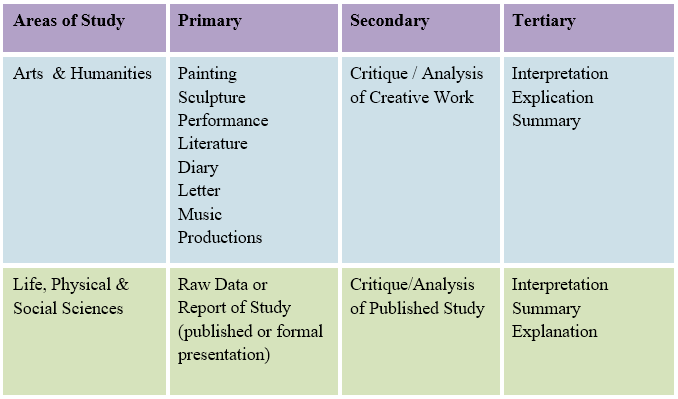Most students have performed research, which is gathering information from a variety of sources and compiling the data into one document or presentation. Each report begins with an introduction to the topic, and the body of the report builds a position or develops an explanation on a topic, often with real world applications, and the conclusion, and usually has a list of references at the end. However, this merely lays the foundation for more in-depth primary research performed at the graduate and professional level. Primary research involves a study and analysis of resulting data. There are many different types of primary research studies, which are listed below:
Archival: historic documents are used to understand an event
Case study: a particular client is involved in a situation that is monitored in all stages of development
Experiment: an element of change is imposed on something and the impact is monitored
Explication: an creative work is interpreted
Interview: a conversation with someone that has made a major impact in a particular discipline is record
Observation: a group of people, animals, plants, etc. are watched closely for specific natural tendencies or phenomena
Survey: people are questioned about their opinions on various issues and circumstances
Theoretical: an idea is developed only in theory, often with practical applications proposed
Many studies are described with these elements:
Longitudinal: the subject(s) are tracked over a time period for long-term impacts.
Empirical: based on observed and measured phenomena, deriving knowledge from actual experience rather than from theory or belief. The results are verified by outside researchers.
Qualitative: assessments of quality are made based on specific factors
Quantitative: assessments are made based on numeric change
Each of these types of studies can be done with a different focus and time frame. Primary research in the sciences and humanities is often performed in each of these levels of research study, and published in the professional literature of the discipline. Research for college-level courses often requires primary research studies for the main sources used. Written for professional peers, these sources are often challenging for students to read and comprehend. Researchers need to recognize the additional time required to understand the in-depth material presented, and develop the skills and stamina to deal with the challenge. Most undergraduate college-level research is secondary research, building on the concepts and information developed through primary research. Most researchers are familiar with tertiary research, which uses secondary, tertiary and other sources of common knowledge to develop an idea.

Table 2: Examples of Primary, Secondary & Tertiary Sources
In the figure above, in the arts and humanities, primary sources are the creative works, such as literature, musical or visual works. Secondary sources are often the result of intense study of creative works, attempting to analyze or critique a creative work. Tertiary sources attempt to explain, interpret or summarize the original work, assuming that the original creation is difficult to understand or appreciate.
In the sciences, primary sources are research products resulting from a research study, or the raw data from the research study. Secondary sources include critiques or analyses of published studies, and compilation of material from primary studies on the same ideas. Tertiary sources interpret, explain and summarize material from secondary sources, often to make the material more accessible and understood for the general public.
